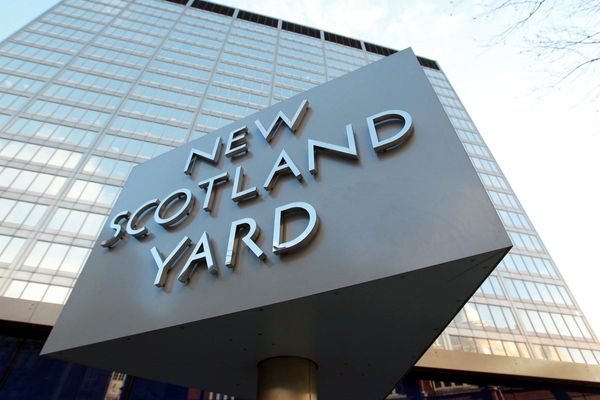
Three more coal projects have been ticked off this week by the NSW government, all of which are extensions of Glencore’s existing coalmines — Mount Owen, Liddell Coal Operations, and Ravensworth Coal Operations.
They follow Plibersek’s stamp of approval last week for the short-lived Isaac River mine, which got a five-year deadline to dig out metallurgical coal for steelmaking, a project her spokesperson noted received no submissions during its consultation period.
The three NSW projects will “improve the management of water and waste across adjoining coalmines in the Hunter Valley”, a Planning and Environment Department spokesperson told Crikey, and showed “feasible” measures to reduce emissions.
It means four separate coal projects in four days have been greenlit in Australia.
The world’s top energy body, the International Energy Agency, has repeatedly advised that “no new coalmines or mine extensions” can be approved if we want a shot at limiting global heating to under 1.5 degrees.
Just six days earlier, Plibersek proudly tweeted about rejecting two Queensland coalmines over lapsed applications, declaring: “If companies aren’t willing to show how they will protect nature, I’m willing to cancel their projects — and that’s exactly what I’ve done.”
Australia Institute research director Roderick Campbell replied asking whether she would be “willing to cancel a project due to climate impacts, not just overdue paperwork” — but got no response.
Campbell tells Crikey there are decisions made every day that facilitate fossil fuel expansion in Australia, and “if we took climate science seriously, every one of the answers would be no”.
“It’s quite rare to see a yes or no decision from a federal government minister in the spotlight, but every week state planning agencies and federal environmental agencies are doing so,” he says. “It’s the hundreds of smaller decisions that build momentum within the many stages of project approval and that paints Tanya Plibersek into a corner where she has to say yes.”
Plibersek told ABC’s Radio National yesterday that her decisions were bound by national environmental law, and that the Isaac River mine met standards under the Environment Protection and Biodiversity Conservation Act (EPBC) “as it is at the moment”.
The current nature of the act does mean Plibersek’s hands are tied, but that doesn’t mean things couldn’t be different. In fact, they could’ve changed more than 20 years ago.
Devil is in the detail
In December, the Albanese government conducted a review of the EPBC Act, in its consultation stage with laws to be introduced later this year or early next. In a statement, the Climate Council questioned why coal approvals had not been put on hold in the interim.
“The environment minister has a responsibility to scrutinise all risks of harm to the environment, and it is irresponsible that she has refused to look at the immense and indisputable climate harm that all new coal and gas projects pose,” head of advocacy Dr Jennifer Rayner said.
The problem, Melbourne University Law School PhD candidate Ella Vines tells Crikey, is that Plibersek has to play the ball as it lies. Vines is researching whether the Paris Agreement is creating legal pathways to halt Australian coal extraction and consumption.
“The environment minister has only limited scope to consider climate change impacts of a proposed coal project under the EPBC Act and therefore cannot refuse a coal project due to the GHG emissions associated with the project,” Vines explains.
The reason lies in our EPBC Act — it says the minister must personally approve any project that will have an impact on nine “matters of national environmental significance (MNES)”, which include threatened species, migratory species, water resources, the Great Barrier Reef Marine Park, and world heritage properties.
But crucially, a project that will cause high emissions is not an MNES in and of itself, Vines says, and coal projects are considered against the nine other MNES instead.
“What this means in practice is that greenhouse gas emissions associated with a proposed coal project continue to be considered in ministerial decision-making under the EPBC Act but are insufficient grounds to refuse the development.”
Also crucially, the government’s reforms did not include an all-important climate trigger — a piece of policy that has, across the past 23 years, been floated across party lines, and been killed each time.
The unlikely architect of the climate trigger
In November 2000, then environment minister Robert Hill surprised his colleagues by releasing draft regulations for a “greenhouse trigger” under the EPBC Act, despite his cabinet having sidelined the plan earlier that year after the concept of a possible application of a trigger had first been floated in a government consultation paper in 1999.
In a media release at the time, the Liberal senator said that “under the draft regulations, the EPBC Act would be triggered by major new developments if they are likely to result in greenhouse gas emissions of more than 0.5 million tonnes of carbon dioxide equivalent in any 12-month period”.
The push received intense backlash from the industry which found it “grossly unfair”, and from then deputy prime minister John Anderson and industry minister Nick Minchin.
‘Time to act’, says Albo
In 2005 a certain Labor environment spokesman by the name of Anthony Albanese introduced the Avoiding Dangerous Climate Change (Climate Change Trigger) Bill. It proposed a trigger would kick in if a project released more than 500,000 tonnes of CO2 a year.
“The glaring gap in matters of national environmental significance is climate change,” Albanese’s rousing speech reads. “This bill closes that gap. The climate change trigger will enable major new projects to be assessed for their climate change impact as part of any environmental assessment process and will ensure that new developments represent best practice.
“It is time to act. It is time for procrastination to end.”
The private member’s bill failed.
The Greens take up the trigger
Fast forward to now and the Greens are pushing for a much lower cap of 100,000 tonnes of CO2 a year before the trigger kicks in, but they’ve also floated an emissions intensity threshold which basically proposes a “quality over quantity” approach to emissions.
A 2020 review of the EPBC Act by the former competition watchdog head Graeme Samuel indicated a trigger would be effective if the onus was on businesses to publish their own emissions forecasts, but fell short of recommending that the minister should enforce it. Samuel’s position was that environment laws should not duplicate other policies meant to regulate emissions and the government continues to cite that reasoning.
Plibersek broadly supported the Samuel review, declaring Labor’s “reforms are seeking to turn the tide in this country — from nature destruction to nature repair”, and in turn Samuel expressed “complete elation and unqualified admiration and respect” for Plibersek’s policy response.
But a climate trigger, as it has for the past 20-odd years, remains a bridge too far.







